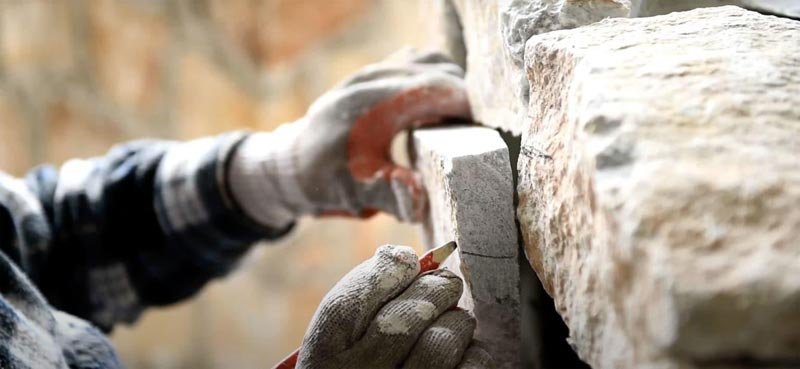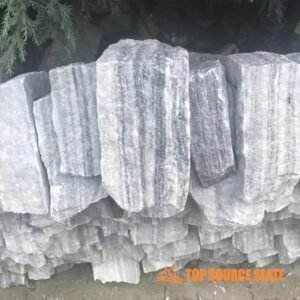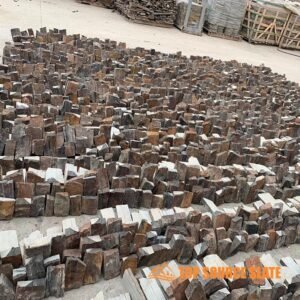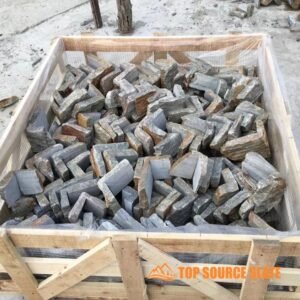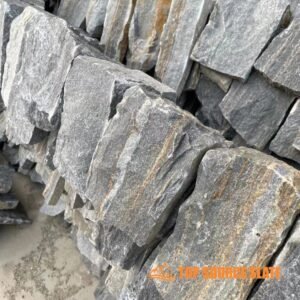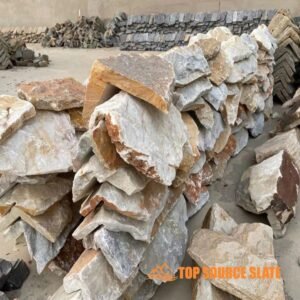Het bouwen van een droge stapel stenen muur is een project dat vakmanschap combineert met functioneel ontwerp. Dit type muur is gebouwd zonder mortel en vertrouwt op de precieze plaatsing van stenen om een stevige structuur te creëren. Deze gids leidt u stap voor stap door het proces en bevat belangrijke details om ervoor te zorgen dat uw muur zowel duurzaam als visueel aantrekkelijk is.
Planning en voorbereiding
Een goede planning is cruciaal voor een succesvol stenen muurproject met droge stapels. Begin met het berekenen van de totale vierkante meters van uw muur. Meet de lengte en hoogte, rekening houdend met eventuele hellingen of oneffenheden in het terrein. Deze metingen helpen u bij het inschatten van de hoeveelheid steen en andere materialen die u nodig heeft.
Materialen en gereedschappen
Je hebt verschillende gereedschappen en materialen nodig:
- Hulpmiddelen: Schoppen, steenhamer, kleine voorhamer, beitel, touw, waterpas, handschoenen, veiligheidsbril, troffel, rubberen hamer en een mengboor met een mortierpeddel
- Materialen: Droge stapelstenen, grind voor de fundering en aanvulling, geperforeerde afvoerbuis (indien nodig) en aangepaste mortel of lijm als extra stabiliteit nodig is
Selectie van droge stapelstenen
Kies droge stapelstenen die aan de boven- en onderkant plat zijn, zodat ze gemakkelijker kunnen worden gestapeld. Stenen die blokkerig of uniformer van vorm zijn, zullen het bouwproces versnellen. Onregelmatige stenen kunnen worden gebruikt voor een rustieker uiterlijk, maar ze vereisen meer vaardigheid en tijd om goed in elkaar te passen
-
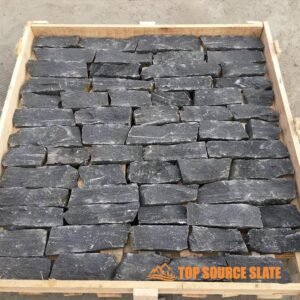 Groothandel zwarte kwartsiet droge stapel willekeurige bekleding
Groothandel zwarte kwartsiet droge stapel willekeurige bekleding -
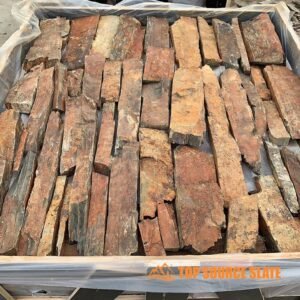 Beste kwaliteit droge stenen muurbekleding
Beste kwaliteit droge stenen muurbekleding -
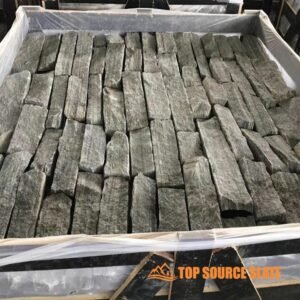 Fabriek directe verkoop goedkope losse stenen muurbekleding
Fabriek directe verkoop goedkope losse stenen muurbekleding -
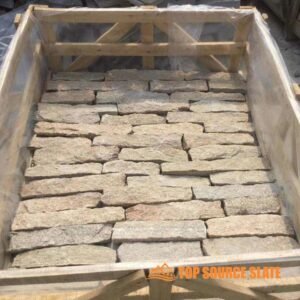 Fabrieksmatig willekeurige natuurstenen muurbekleding
Fabrieksmatig willekeurige natuurstenen muurbekleding -
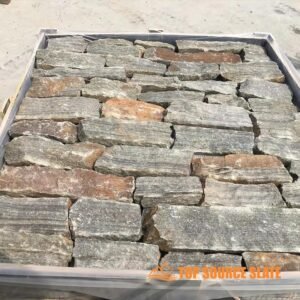 Exterieur decoratieve losse droge stapelrichel stenen bekleding
Exterieur decoratieve losse droge stapelrichel stenen bekleding -
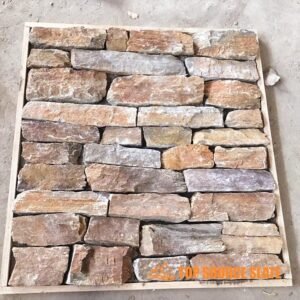 China leverancier onregelmatige gevelbekleding steenfineer
China leverancier onregelmatige gevelbekleding steenfineer -
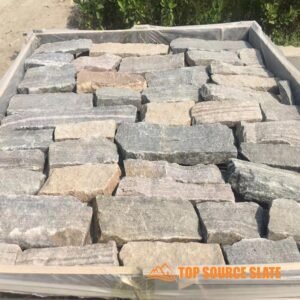 Chinese fabrikant exterieur natuurlijke losse stenen muurbekleding
Chinese fabrikant exterieur natuurlijke losse stenen muurbekleding -
 China fabrikant losse richel steen natuursteen fineer
China fabrikant losse richel steen natuursteen fineer -
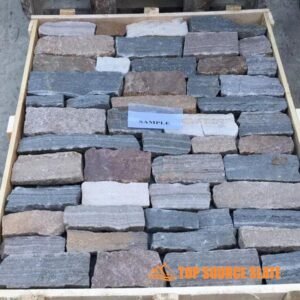 China leverancier exterieur droge stapel stenen open haard
China leverancier exterieur droge stapel stenen open haard -
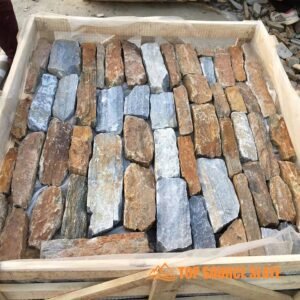 China exporteur losse droge stapel stenen keermuur
China exporteur losse droge stapel stenen keermuur -
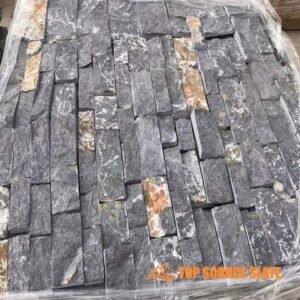 China groothandel droge stapel stenen huis buitenkant
China groothandel droge stapel stenen huis buitenkant -
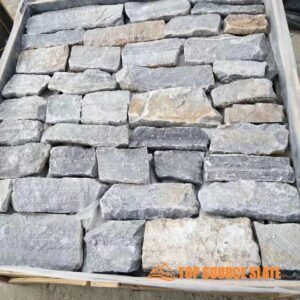 China groothandel droog gestapeld natuursteenfineer
China groothandel droog gestapeld natuursteenfineer -
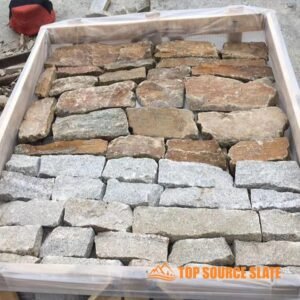 Chinese fabrikant van droge stapelstenen bekleding
Chinese fabrikant van droge stapelstenen bekleding -
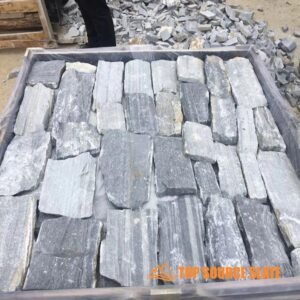 Droge stapelstenen tegels voor binnen en buiten
Droge stapelstenen tegels voor binnen en buiten -
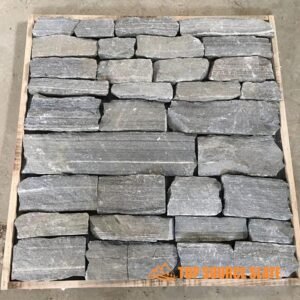 Binnen en buiten groene losse steen voor gevelbekleding
Binnen en buiten groene losse steen voor gevelbekleding -
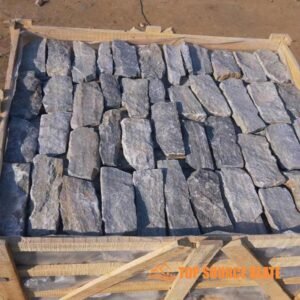 Natuursteen met gevelbekledingsstrips
Natuursteen met gevelbekledingsstrips
Het voorbereiden van de stichting
De basis is het meest cruciale onderdeel van uw droge stapel stenen muur. Begin met het graven van een greppel langs de lengte van de muur, ongeveer 4 tot 8 inch diep. De greppel moet breed genoeg zijn om de grootste stenen te kunnen huisvesten. Vul de greppel met verdicht grind, dat als stabiele basis zal dienen en zal helpen bij de drainage
Afwateringsoverwegingen
Als de muur zich in een gebied bevindt dat gevoelig is voor hevige regen of slechte afvoer, is het essentieel om een afvoersysteem te installeren. Plaats een geperforeerde afvoerbuis aan de onderkant, wikkel deze in een filterdoek en bedek deze met extra grind. Deze opstelling leidt het water weg van de muur, waardoor het risico op erosie en instabiliteit wordt verminderd.
Het leggen van de eerste cursus
De eerste laag drooggestapeld steenfineer is de fundering waarop de hele muur is gebouwd. Plaats de grootste, platste stenen direct op de verdichte grindbodem. Zorg ervoor dat elke steen waterpas en veilig op zijn plaats ligt, aangezien de stabiliteit van de hele muur afhangt van deze eerste laag.
Met behulp van lijm of mortel
Voor extra stabiliteit, vooral bij hoge muren of muren die worden blootgesteld aan barre weersomstandigheden, kunt u overwegen een aangepaste mortel of lijm te gebruiken. Verdeel de mortel met een getande troffel en creëer een volledig bed onder elke steen om ze op hun plaats te houden terwijl het uiterlijk van een droge stenen muur behouden blijft.
Het stapelen van de stenen
In de stapelfase komt het ware vakmanschap van het bouwen van een droge stenen muur tot leven. Elke steen moet zorgvuldig worden geselecteerd, gevormd en geplaatst om stabiliteit, goede pasvorm en esthetische aantrekkingskracht te garanderen. In deze stap verfijn je je techniek terwijl je van de eerste baan naar de top van de muur gaat. Volg deze gedetailleerde richtlijnen om een goed geconstrueerde en visueel samenhangende muur te garanderen.
Plaatsing van droge stapelstenen voor stabiliteit
Bij het stapelen van de stenen is het essentieel om prioriteit te geven aan stabiliteit. Plaats elke steen altijd zo dat deze stevig op de stenen eronder zit. Gebruik voor elke nieuwe steen de volgende technieken:
- Wiebelen voor plaatsing: Nadat u elke steen hebt geplaatst, moet u deze een beetje wiebelen om ervoor te zorgen dat deze stevig op de onderliggende stenen blijft liggen. Dit helpt eventuele luchtspleten te elimineren en zorgt voor een veiligere verbinding, zelfs zonder mortel.
- Stabiliteit testen: Controleer elke steen op beweging. Als het wiebelt, kun je het verplaatsen of de stenen eronder aanpassen om een stabielere basis te creëren. Je kunt ook kleinere stenen gebruiken als opvulstukken om gaten onder grotere stenen op te vullen.
Het breken van de gewrichten
Een van de belangrijkste principes bij het stapelen van stenen is het vermijden van verticale voegen van de ene laag naar de andere. Deze techniek, bekend als “het breken van de gewrichten,” verhoogt de stabiliteit en sterkte van de muur. Zo gaat het:
- Compenseer elke steen: Elke steen moet de verbinding tussen de droge stapelstenen direct daaronder overlappen. Deze methode verdeelt de belasting gelijkmatiger over de muur en voorkomt het ontstaan van zwakke plekken.
- Varieer met steengroottes: Gebruik een combinatie van grote en kleine stenen om het gewenste offsetpatroon te verkrijgen. Grote stenen fungeren als stabiliserende ankers, terwijl kleinere stenen gaten opvullen en een ingewikkelder ontwerp creëren
De muur naar achteren leunen (beslag)
Om de structurele integriteit van uw droge stenen muur te verbeteren, leunt u deze iets naar achteren in de dijk of op een heuvel, ook wel het creëren van een “beslag.” Dit is vooral belangrijk voor keermuren:
- Hoek van de Lean: Voor elke voet hoogte moet de muur ongeveer 5 cm in de dijk leunen. Deze helling helpt de druk van de grond achter de muur tegen te gaan, waardoor wordt voorkomen dat deze naar voren kantelt.
- Samenhang: Gebruik een touwtje en een waterpas om tijdens het bouwen regelmatig het beslag van de muur te controleren. Dit zorgt voor een consistente helling en voorkomt dat delen van de muur te verticaal staan, wat tot instabiliteit zou kunnen leiden.
Dodemansstenen ter versterking
Om de sterkte van de muur nog verder te vergroten, kunt u deze periodiek plaatsen “dode man” stenen. Dit zijn langere stenen die zich uitstrekken vanaf de voorkant van de muur tot in de dijk erachter.
- Plaatsing van dodemansstenen: Plaats om de paar meter een lange steen die diep in de aarde achter de muur reikt. Deze stenen fungeren als ankers, verbinden de muur met de dijk en helpen het gewicht van de muur te verdelen.
- Frequentie: Plaats afhankelijk van de grootte van de muur dodemansstenen elke 3 tot 1,5 meter horizontaal en verticaal. Deze stenen zijn van cruciaal belang voor hogere muren en muren die aanzienlijke hoeveelheden grond vasthouden.
Vormgeven van droge gestapelde stenen voor een strakkere pasvorm
Terwijl je de stenen stapelt, moet je ze af en toe vormgeven zodat ze beter passen. Het doel is om een glad, in elkaar grijpend muuroppervlak te creëren met zo min mogelijk openingen.
- Met behulp van een beitel en hamer: Gebruik voor droge stapelstenen die niet perfect passen een steenhamer en beitel om overtollig materiaal weg te hakken. Verwijder kleine stukjes tegelijk om te voorkomen dat de steen barst.
- Hiaten opvullen: Gebruik kleinere stenen of steenslag om de gaten tussen grotere stenen op te vullen. Dit maakt niet alleen de structuur strakker, maar verbetert ook de esthetische aantrekkingskracht van de muur.
De aanvulling in lagen aanbrengen
Terwijl u de muur bouwt, is het belangrijk om deze regelmatig op te vullen met grind. Opvullen dient meerdere doeleinden, waaronder het bieden van extra ondersteuning voor de muur en het verbeteren van de drainage.
- Vul elke paar cursussen aan: Na het leggen van enkele lagen droge stapelsteen achter de muur een laag grind aanbrengen. Het grind moet een paar centimeter achter de stenen uitsteken en worden verdicht om ondersteuning te bieden.
- Drainagefunctie: Het grind zorgt er ook voor dat het water door de muur kan wegvloeien in plaats van dat het zich erachter ophoopt, wat de druk zou kunnen vergroten en ervoor zou kunnen zorgen dat de muur scheef komt te staan of instort.
Omgaan met onregelmatige stenen
Als je onregelmatige stenen gebruikt, moet je strategischer te werk gaan bij het plaatsen ervan. Het doel is om een evenwicht te bereiken tussen esthetiek en stabiliteit:
- Willekeurig patroon voor natuurlijke uitstraling: Schik droog gestapelde stenen zo dat er geen lange, ononderbroken horizontale of verticale lijnen ontstaan. Hierdoor krijgt uw muur een natuurlijker uiterlijk terwijl de sterkte behouden blijft.
- Het mengen van maten en vormen: Gebruik een verscheidenheid aan steenformaten en -vormen om visuele interesse te creëren en de noodzaak voor uitgebreid kappen te verminderen. Grotere stenen kunnen de muur verankeren, terwijl kleinere stenen gaten opvullen en textuur toevoegen.
Een consistente hoogte behouden
Controleer tijdens het stapelen regelmatig de hoogte van de muur met een touwtje of waterpas. Door elke baan waterpas te houden, zorgt u ervoor dat de muur visueel aantrekkelijk en structureel gezond is.
- Snaarlijn voor nauwkeurigheid: Span voor elke laag een touwtje langs de lengte van de muur op de gewenste hoogte. Gebruik dit als richtlijn om ervoor te zorgen dat de droge stapelstenen gelijkmatig worden gelegd.
- Afstellen met vulplaatjes: Als een steen te laag zit, gebruik dan kleinere stenen of vulplaatjes eronder om hem op de juiste hoogte te brengen.
De topcursus voltooien
De laatste laag stenen, bekend als de sluitsteen, zorgt voor zowel een afgewerkt uiterlijk als extra stabiliteit. Kies grotere, vlakkere stenen voor de bovenlaag om alles op zijn plaats te houden.
- Capstone-plaatsing: Plaats de dekstenen stevig en zorg ervoor dat ze plat liggen en goed vastzitten. Dit helpt de muur aan elkaar te binden en voorkomt dat droge stapelstenen na verloop van tijd verschuiven.
- Optionele mortel voor dekstenen: Terwijl de rest van de muur droog gestapeld is, kunt u ervoor kiezen om de dekstenen te mortelen voor extra veiligheid, vooral als de muur wordt blootgesteld aan zwaar voetverkeer of weer.
Door deze stappen zorgvuldig te volgen, zorgt u ervoor dat uw stenen muur met droge stapel zowel mooi als duurzaam is, de tand des tijds doorstaat en tegelijkertijd tijdloze charme aan uw landschap toevoegt.
gerelateerd aan:
Stacked Stone: een complete kopersgids【update】
Hoe u natuurstenen panelen voor uw huis kiest
Hoe gestapelde steen of richelsteen te installeren
Hoe een gestapelde stenen open haard te installeren
Hoeken hanteren en speciale kenmerken
Het omgaan met hoeken en het integreren van speciale kenmerken zoals ramen, opbergkasten of verlichtingsarmaturen zijn cruciale aspecten van het bouwen van een stenen muur met droge stapels. Hoeken vereisen een nauwkeurige planning en een zorgvuldige plaatsing van de stenen om de structurele integriteit en esthetische aantrekkingskracht van de muur te behouden. Op dezelfde manier vereist het werken rond speciale kenmerken creativiteit en precisie om een naadloze integratie met de muur te garanderen. Hier leest u hoe u deze uitdagingen effectief kunt aanpakken.
Hoeken bouwen
Droog gestapelde stenen hoeken vormen een cruciaal onderdeel van de muurstructuur. Slecht geconstrueerde hoeken kunnen de stabiliteit van de hele muur in gevaar brengen, dus het is essentieel om ze voorzichtig te benaderen.
Te beginnen met hoeken
- Stichting eerst: Begin met het leggen van een stevige fundering op de hoeken, net zoals u dat voor de rest van de muur zou doen. Zorg ervoor dat de eerste laag stenen waterpas en stevig is geplaatst. De stabiliteit van de hoek hangt af van hoe goed de funderingsstenen zijn geplaatst.
- L-vormige stenen: Gebruik, indien beschikbaar, L-vormige hoekstenen die speciaal zijn ontworpen voor droge stapelwanden. Deze stenen wikkelen zich om de hoek en zorgen voor een naadloze en sterke verbinding tussen de twee elkaar kruisende muren.
- Wisselende cursussen: Wanneer u stenen op de hoek plaatst, wissel dan bij elke laag de richting van de overlap af. Laat bijvoorbeeld in het ene parcours de stenen op de linkermuur de hoek overlappen, en laat in het volgende parcours de stenen op de rechtermuur overlappen. Dit afwisselende patroon, bekend als ‘bonding’, vergroot de sterkte van de hoek door de stenen in elkaar te grijpen.
Hoe gestapelde stenen panelenhoeken te installeren
Het handhaven van structurele integriteit
- Vermijd verticale voegen: Vermijd, net als bij de rest van de muur, verticale voegen direct boven elkaar uit te lijnen bij de hoek van de droge stapelsteen. Verplaats de verbindingen in elke laag om een stabielere en onderling verbonden structuur te creëren.
- Gebruik grotere stenen: Gebruik waar mogelijk grotere stenen op de hoeken. Deze stenen zijn stabieler en zorgen voor een sterker ankerpunt voor de rest van de muur.
- Controleren op niveau: Controleer regelmatig of de hoek zowel horizontaal als verticaal waterpas blijft tijdens het opbouwen van de muur. Gebruik een touwlijn of waterpas om de nauwkeurigheid te garanderen, en pas de stenen indien nodig aan.
Met speciale functies
Speciale kenmerken zoals ramen, deuren, elektriciteitskasten en verlichtingsarmaturen maken uw project complexer. Het correct integreren van deze elementen in de muur vereist een zorgvuldige planning en nauwkeurig zagen.
Ramen en deuren
- Het inlijsten van de opening: Wanneer u rond ramen of deuren bouwt, begin dan met het omlijsten van de opening met stenen. Gebruik zo groot mogelijke droge stapelstenen om een stabiel frame te creëren. Deze stenen dragen de belasting van de muur boven de opening.
- Stenen op maat snijden: Meet de ruimte rondom het raam of de deur zorgvuldig op. Snijd de stenen zo dat ze goed tegen het frame passen en zorg ervoor dat er geen gaten achterblijven die de structuur kunnen verzwakken. Gebruik een steenzaag of haakse slijper om nauwkeurige sneden te verkrijgen.
- Lateien: Overweeg het gebruik van een stenen latei (een horizontale steen die over de bovenkant van het raam of de deur wordt geplaatst) om de stenen boven de opening te ondersteunen. De latei moet minimaal 15 cm voorbij de opening aan elke kant uitsteken om de belasting effectief te verdelen.
Nutsdozen en verlichtingsarmaturen
- Meten en markeren: Meet en markeer nauwkeurig de posities van elektriciteitskasten, verlichtingsarmaturen of andere obstakels op de droge stapelstenen eromheen. Precisie is essentieel om ervoor te zorgen dat deze kenmerken naadloos in de muur passen.
- Openingen snijden: Gebruik een haakse slijper of steenzaag om hiervoor openingen in de stenen te zagen. Het is vaak gemakkelijker om meerdere kleine sneden te maken dan te proberen een groot stuk in één keer te verwijderen. Deze aanpak helpt voorkomen dat de steen barst of breekt.
- Nauwsluitend: Zorg ervoor dat de stenen rondom precies passen. Deze zorgvuldige montage zorgt ervoor dat de opbergdozen of armaturen veilig in de muur worden ingebed en dat de algehele uitstraling samenhangend en professioneel blijft.
Afvoer installeren (indien nodig)
Voor keermuren of muren in gebieden met hevige regenval is een goede afwatering cruciaal. Na het leggen van de eerste steenlagen plaatst u achter de muur een drainagebuis omwikkeld met filterdoek. Deze buis moet licht hellend zijn, zodat het water van de muur kan weglopen. Bedek de buis met afvoergesteente en ga verder met het bouwen van de muur zoals normaal.
Het afdekken van de muur
De deksteen is de finishing touch van uw stenen muur met droge stapeling. Het dient zowel een functioneel als een esthetisch doel, het helpt de stenen eronder op hun plaats te houden en de muur een gepolijst uiterlijk te geven. Kies stenen die iets groter zijn of een contrasterende kleur hebben voor een onderscheidende uitstraling. Gebruik een waterpas of touwlijn om ervoor te zorgen dat de dekstenen gelijk en uitgelijnd zijn.
Na installatie: afdichting en onderhoud
Zodra uw muur voltooid is, kunt u overwegen de stenen af te dichten, vooral als het een buitenmuur is. Afdichting helpt de stenen te beschermen tegen vocht, vlekken en uitbloeiingen. Breng een hoogwaardige penetrerende sealer aan volgens de instructies van de fabrikant. Verzegelde steen is gemakkelijker te onderhouden en de sealer kan vlekken helpen afstoten.
Lopend onderhoud
Regelmatig onderhoud is de sleutel tot een lange levensduur van uw stenen muur met droge stapeling. Inspecteer de muur regelmatig op tekenen van bezinking of verplaatsing van stenen en breng indien nodig aanpassingen aan. Voor buitenmuren kan af en toe reinigen met water en een zachte borstel het uiterlijk behouden. Vermijd het gebruik van agressieve chemicaliën of hogedrukreiniging, omdat deze de steen kunnen beschadigen.
Speciale overwegingen voor verschillende substraten
Installeren over open wanden: Wanneer u fineer met droge stapelsteen over open wanden installeert, zorg er dan voor dat het raamwerk structureel gezond is en het gewicht van de steen kan dragen. Gebruik cementplaat die minstens 1/2 inch dik is, of een combinatie van houten omhulsel, metalen lat en een kraslaag.
Installeren op beton, blokken of baksteen: Zorg ervoor dat het oppervlak schoon is en vrij van vreemde stoffen. Hiervoor kan zandstralen of waterstralen nodig zijn. Als het oppervlak oneffen is, breng dan een dikbedmortelmengsel aan om oneffenheden weg te werken voordat u de stenen legt.
Installeren over staal: Reinig het oppervlak van alle verontreinigingen, zoals roest, vuil of olie. Indien mogelijk een draadlat op het staal hechten alvorens een dikbedmortelmengsel aan te brengen. Als alternatief kunnen stenen rechtstreeks op een schone stalen ondergrond worden geplakt met behulp van een lijm op epoxybasis.
Conclusie
Het bouwen van een droge stapel stenen muur is een dankbaar project dat kunstenaarschap en techniek combineert. Door deze gedetailleerde stappen te volgen en rekening te houden met de specifieke vereisten van uw locatie, kunt u een muur creëren die zowel mooi als duurzaam is. Of u nu een droge stenen binnenmuur bouwt voor een gezellige open haard of een droge stenen tuinmuur aan de buitenkant, deze gids zal u helpen een professioneel resultaat te bereiken dat de tand des tijds zal doorstaan.
Topbron leisteen blinkt uit op al deze gebieden, waardoor wij de beste partner zijn in uw steenbekledingswensen, of het nu gaat om een stenen gevelbekleding voor buiten of een karakteristieke binnenmuur. Neem vandaag nog contact met ons op voor meer informatie over hoe wij u bij uw volgende opdracht kunnen helpen.

